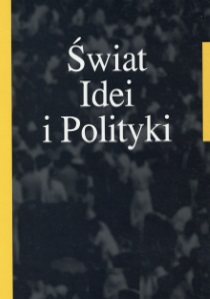Geopolitical Gameplay with COVID-19 Pandemic: Russian Ecosystem of Disinformation and Propaganda
DOI:
https://doi.org/10.34767/SIIP.2020.19.12Keywords:
disinformation, propaganda, information security, COVID-19Abstract
Both disinformation and propaganda are not new activities, but they have been accompanying societies practically since their inception. What’s more, their usefulness in the actions of states is confirmed not only by numerous historical examples, but also by those we are currently witnessing and are closely related with the spread of the COVID-19 pandemic. The article is an attempt to define and describe not only the Russian ecosystem of disinformation and propaganda, but also an attempt to answer the question of how different pillars of this ecosystem play different roles, feed each other and strengthen each other.
References
Bodine-Baron E., Helmus T.C., Radin A., Treyger E. (2018). Countering Russian Social Media Influence, RAND Corporation, Santa Monica, California. Pobrano z lokalizacji https://www.rand.org/pubs/research_reports/RR2740.html. [dostęp:29.08.2020].
Dobek-Ostrowska B., Fras J., Ociepka B. (1999). Teoria i praktyka propagandy. Wrocław: Wydawnictwo Uniwersytetu Wrocławskiego.
Galeotti M. (2017). Policy Brief: Controlling Chaos: How Russia Manages Its Political War in Europe, London: European Council on Foreign Relations, August 2017.
GEC Special Report (2020). Pillars of Russia’s Disinformation and Propaganda Ecosystem, Washington: U.S. Department of State, August 2020.
Kavanagh J., Cherney S., Reininger H., Griffin N. (2020). Fighting Disinformation Online. Building the Database of Web Tools, RAND Corporation, Santa Monica, California. Pobrano z lokalizacji https://www.rand.org/pubs/research_reports/ RR3000.html. [dostęp: 25.08.2020].
Kilcullen D. (2020). The Dragons and the Snakes: How the Rest Learned to Fight the West. Oxford: Oxford University Press.
Контрразведывательный словарь. (1972). Moskwa: Wyższa Szkoła KGB im. F.E. Dzierżyńskiego.
Kula H.M. (2005). Propaganda współczesna. Istota – właściwości. Toruń: Wydawnictwo Adam Marszałek.
Materiały własne z webinarium naukowego pt. „Globalna i regionalna rozgrywka pandemią COVID-19” zorganizowanego w dniu 28 kwietnia 2020 r. przez Centrum Doktryn i Szkolenia Sił Zbrojnych w ramach kampanii „Nowe Urządzenie Polskie – NUP 2X35”.
Международные угрозы 2020. Каждый – за себя (2020), МГИМО. Moskwa. Pobrano z lokalizacji https://mgimo.ru/library/publications/int-threats-2020/. [dostęp: 12.01.2020].
Pratkanis A., Aronson E. (2004). Wiek propagandy. Warszawa: Wydawnictwo Naukowe PWN.
Targalski J. (2020). Koronawirus jako narzędzie wojny informacyjnej, wystąpienie podczas webinarium naukowego pt. „Globalna i regionalna rozgrywka pandemią COVID-19” zorganizowanego w dniu 28 kwietnia 2020 r. przez Centrum Doktryn i Szkolenia Sił Zbrojnych w ramach kampanii „Nowe Urządzenie Polskie – NUP 2X35”.
Volkoff V. (1991). Dezinformacja – oręż wojny. Warszawa: Wydawnictwo Delikon.

